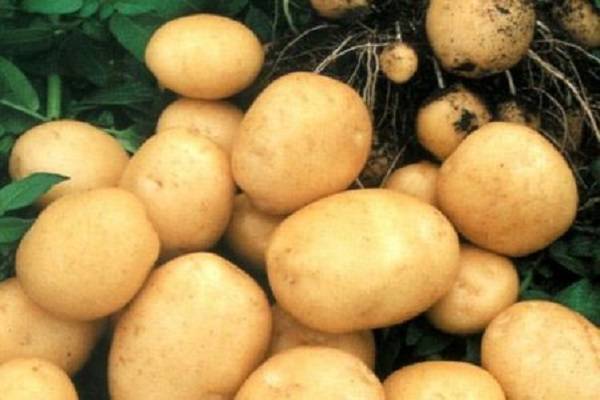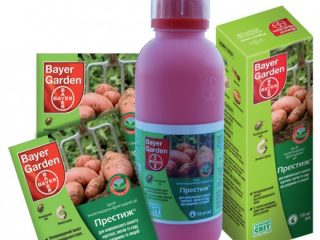Content
Belarus has long been famous as a region where they love and know how to grow potatoes; it is not for nothing that it is even called the second homeland of this popular vegetable. The work of breeders to develop the best potato variety continues, and in recent years the Ragneda variety was developed, which, despite its relative youth, has already gained popularity among summer residents and gardeners.
Origin story
About 10 years ago, specialist breeders from the Scientific and Production Center of the National Academy of Sciences of Belarus for Potato and Fruit and Vegetable Growing developed a new potato variety called Ragneda by crossing the Magician and form 1579-14.
In 2011, this potato was already registered in the State Register of Russia with a recommendation for cultivation in the Central and Northwestern districts. But thanks to many interesting characteristics, the popularity of this potato variety is gaining momentum, and it is grown not only in Belarus and in the above-mentioned regions, but also in many other regions of Russia and even in Ukraine. The easiest way to purchase seed material of this variety is through the Institute of Potato Growing, located near Minsk in the village of Samokhvalovichi.
Description and characteristics
Ragneda potatoes belong to medium-late varieties in terms of ripening time - in order for the tubers to ripen well, it is necessary that 95 to 110 days pass from the moment the first shoots appear. Of course, to grow such potatoes, you will need more work and patience than for early varieties, but the taste and yield will pay off all your efforts.
Potato bushes grow tall, with an abundance of leaves, and do not have a particular tendency to spread out to the sides; however, hilling will have a beneficial effect on increasing productivity. The leaves are medium-sized, smooth, almost without wavy edges, and have a color from light green to green.
The Ragneda variety is gaining great popularity, primarily due to its high yield rates.
And if you create good conditions for growth and development, you can get up to 430 c/ha. For a gardener, especially a beginner, it is more interesting to find out how many potato tubers can be harvested from one Ragneda bush. This amount can be 15-20, and this should be taken into account when planting potatoes - tubers should be planted at a slightly greater distance than usual early varieties.
A special feature of the Ragneda potato variety is that the plants adapt very well to different growing conditions and soils, and therefore are interesting for use in different regions and for beginners in gardening.
Root vegetables have the following characteristics:
- The shape of the tubers is oval-round and regular;
- The eyes can be of both shallow and medium depth;
- The peel has a yellow tint and the flesh is creamy white;
- The tubers grow of medium size, the weight of one root crop ranges from 78 to 120 grams;
- The starch content is quite significant and can vary from 12.7 to 18.4%. Due to this, potatoes tend to boil well when cooked.
The percentage of marketable potato fruits among the total harvest ranges from 83 to 96%, depending on weather conditions. Such a large scatter shows that with a lack of moisture and other unfavorable conditions, Ragneda potatoes can produce a significant number of small tubers that are not very suitable for sale.
Potatoes store well, keeping quality is about 97%. But, due to the high germination energy of tubers, friendly sprouts usually begin to actively appear in root crops already in February-March. To prevent this from happening, the temperature in the storage facilities must be strictly kept between 0 and +2°C, which, of course, is not always feasible in ordinary village cellars, especially in the southern regions.
The taste qualities of potatoes of the Ragneda variety are rated as good and excellent. Root vegetables make wonderful mashed potatoes. The variety belongs to the table variety according to its intended purpose.
The value of the variety lies in its fairly high resistance to most common diseases, primarily late blight. Also, the Ragneda variety is well resistant to potato cancer, golden cyst nematode, wrinkled and striped mosaic and leaf curl virus.
Advantages and disadvantages
Advantages | Flaws |
High yield | Requires low temperatures during storage, otherwise it germinates quickly |
Resistance to late blight, potato blight and many other diseases | If care rules are not followed and bad weather conditions may grow small |
Good taste and boilability of potatoes |
|
Resistance to damage and good preservation |
|
The variety is not picky about the choice of soil |
|
High germination energy and uniform appearance of all sprouts |
|
Landing
To plant Ragneda potatoes, it is important to choose the optimal timing - at a depth of 10 cm, the soil temperature should be at least +8°C. But in order not to walk around the garden with a thermometer, most experienced gardeners advise focusing on the blooming of birch leaves. The best moment for planting potatoes comes when the birch tree begins to be covered with a barely noticeable green haze of foliage. Delay in planting is also undesirable, since the soil may lose most of the moisture it contains.
Usually, a month before planting, potatoes are germinated in the light, thereby discarding diseased and weak tubers with weak, thread-like sprouts even before planting.
Almost any place for planting the Ragneda variety is suitable, it is only desirable that tomatoes were not grown on it in previous years, since they have the same pests and diseases as potatoes.
It is better to plant more sparsely, leaving at least 15-20 cm between tubers, and 70 to 90 cm between rows. In this case, the bushes will have enough space to form a significant harvest.
Care
Ragneda potatoes are relatively unpretentious to growing conditions, but still some basic care procedures must take place.
Hilling and feeding
It is traditionally believed that it is impossible to grow potatoes without hilling.Indeed, this procedure allows you to obtain much more significant yields, and even when using unconventional methods of growing potatoes (such as under straw), hilling also plays an important role. In the latter case, they simply cover the bushes not with earth, but with straw.
After all, this procedure not only promotes the formation of additional roots on potato bushes, but also preserves soil moisture and limits growth weed, and also enhances air exchange in the upper layers of the soil, where young tubers develop.
Hill up potatoes at least 2 times per season:
- The first time - when the sprouts reach a height of 15-20 cm, covering them almost completely;
- The second time - some time before flowering, without waiting for the bushes to close.
If you use mowed grass with humus for hilling, this will serve as additional feeding for the potato bushes.
It is best to combine other fertilizing with watering the potatoes; this is especially important to do during flowering, if there is no natural precipitation during this period.
Diseases and pests
Main problems of potatoes | Signs | How to help plants |
Late blight | Dark spots on the leaves, bushes wither | Treatment with Fitosporin, whey, iodine. |
Scab | Cankers on tubers | Treatment of planting material with Fitosporin and cultivation of green manure before and after potatoes |
Colorado beetle | Many striped beetles with larvae almost completely eat the leaves | For minor damage, sprinkle wood ash on wet leaves. If it is strong, treat with Confidor or Mospilan. |
Wireworm | Potato tubers are dotted with long passages. | Plant rye or mustard on the plot and do not use it for 1-2 years for planting potatoes |
Viruses | Leaves become smaller, lighter and curl | It is impossible to cure; the harvest from such bushes must be dug up separately and fed to animals. |
Harvesting
The Ragneda potato harvest usually begins 30-40 days after flowering, when the tops gradually turn yellow and dry out. A week or two before harvesting, it is recommended to mow the entire above-ground part - the tubers will be better stored, and digging them out will also be more convenient.
Conclusion
Despite its relative youth, the Ragneda potato variety has already gained many fans, since it is sustainable and unpretentious in cultivation, and at the same time tasty and productive.
Reviews about the variety
















